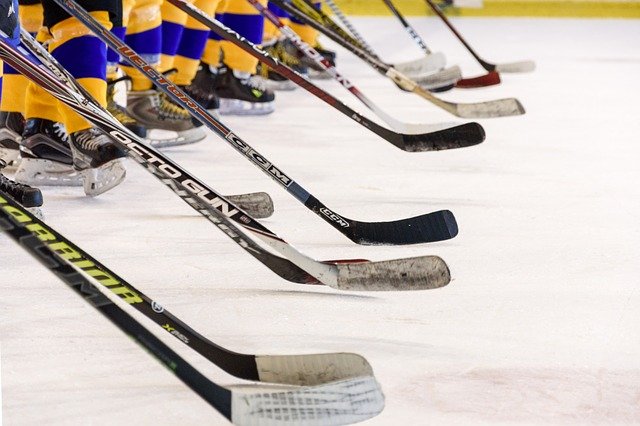Ice hockey is one of the most popular forms of hockey and it’s clear to see why. After all, the full-contact sport is very fast-paced and competitive; it’s exciting to watch and thrilling to play. We’ve rounded up some facts about ice hockey that you may not have known before. Have a read of our post and get to know the sport a little bit better.
The Pucks
During games of ice hockey, the focus is on the puck. In regulated matches, pucks are made from hard rubber and are black in colour. They’re about three inches in diameter and weigh roughly six ounces. Before matches begin, pucks are frozen – this ensures that when they’re being used out on the ice, they stick to the floor and don’t bounce around. Even so, there have been a handful of rare occasions were pucks have been hit so hard that they’ve split.
Pucks of the Past
Sports benefit from technology in countless ways. Ice hockey was officially developed as a sport in Montreal in the 18th century. Back then, people didn’t have the technology that we have today. It’s claimed that in the sport’s earliest days, pucks were made from cow dung that was compacted and frozen.
Not to be Played Outdoors
Though ice hockey can be played outdoors, the majority of matches take place in special-ly purposed indoor venues. Back in 1991, the National Hockey League held a match in Las Vegas. This was the organisation’s first outdoor ice hockey match and things didn’t go according to plan. The players had to deal with an abundance of grasshoppers invading the area and to add to the chaos in the match’s closing minutes a number of black flies began swarming the place.
A Unique Record
Mario Lemieux, playing for Pittsburgh, holds a unique ice hockey record: in a single match, he scored a total of five goals, but each one was scored in a different way. He’s the only National Hockey League player to have scored five goals in five ways in a single match.
Big in Canada
Ice hockey is, of course, huge in Canada, but just how big is it? There are over 600,000 registered players of the sport, which equates to roughly 1.6% of the country’s population. The country with the next highest percentage of ice hockey players is Finland, where 1.2% of the people living there are registered players. Canada also has the highest number of players – the USA has the second highest, with more than 560,000.
Three Cups
The winning team of the NHL’s annual Stanley Cup Finals gets awarded the coveted Stanley Cup, a large trophy with a long and significant history. In fact, it’s the oldest trophy awarded to any North American professional sports team. There are actually three versions of this trophy in existence:
- The original, which was created in 1892 and was handed out to winning teams until 1970. It’s currently on display at the Hockey Hall of Fame’s Vault Room in Toronto and was donated to the sport by Lord Stanley himself (who the trophy’s named after).
- The ‘Presentation Cup’, which was created to effectively replace the original, which by then was becoming too fragile and delicate. Though it was made in 1963, it wasn’t first used until 1970. The Presentation Cup is the one that’s currently awarded to winners of the Stanley Cup Finals.
- The ‘Permanent Cup’, which is a full replica of the Presentation Cup. This was created in 1993 to be displayed at the Hockey Hall of Fame whenever the main Presentation Cup isn’t available (tradition dictates that the winning team of the Stanley Cup Finals gets to keep the Presentation Cup for 100 off-season days).
When the Stanley Cup is away with the winning team, it has a chaperone whose job is to ensure the cup doesn’t get damaged or go missing.
Fastest Slapshot
What makes ice hockey such a great sport to watch and take part in is that it’s very fast and energetic. Pucks are capable of reaching speeds of over 100 miles per hour. The current record for the fastest slapshot is 109.2 miles per hour – this feat was achieved by Czech player Martin Frk at the 2020 AHL All-Star Weekend, which took place in Ontario




